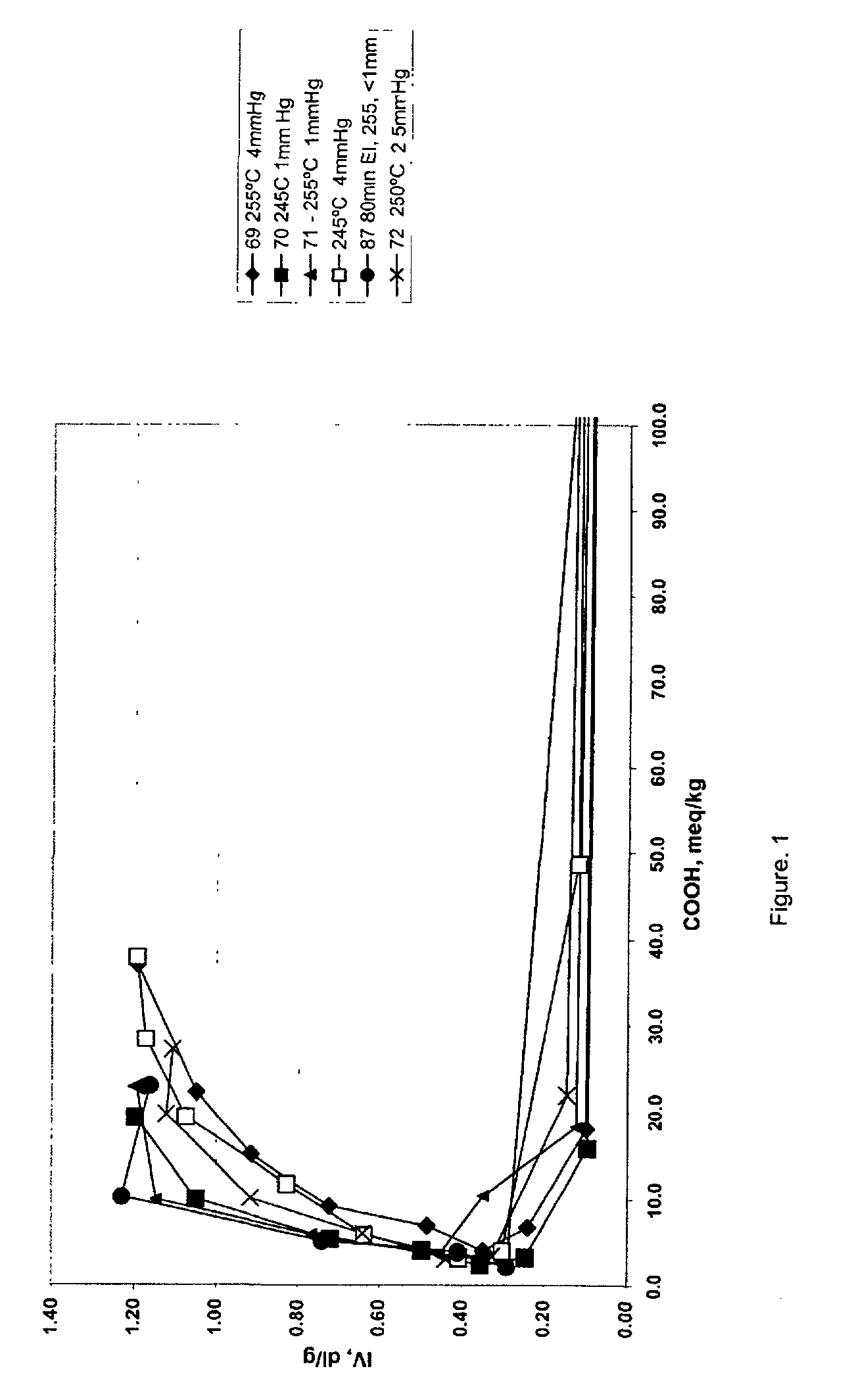Crystalline polyester resins and processes for their preparation
- Summary
- Abstract
- Description
- Claims
- Application Information
AI Technical Summary
Benefits of technology
Problems solved by technology
Method used
Image
Examples
example 2
[0035] The data in Table 2 below were generated by the following procedure, wherein 1,4-butanediol and terephthalic acid in a ratio of 2:1 or 3:1 were charged to a reaction vessel and tetraisopropyl titanate was added with levels varying from 100 to 203 ppm. Ester interchange was initiated by raising the temperature of the vessel to 220.degree. C., while ester interchange time was varied from 110 to 180 minutes. After the reaction had reached the clearing point, pre-polymerization was initiated by raising the temperature and reducing pressure. The level of carboxylic acid end groups was determined by titration with tetrabutylammonium hydroxide. Polycondensation was initiated by raising the temperature to the indicated temperature and reducing pressure in the reaction vessel for the indicated times. Intrinsic viscosity was determined in 60:40 phenol:1,2,2-tetrachloroethane by weight at 25.degree. C. [t2]
2 TABLE 2 EI.sup.6 ppm time Polycondensation conditions No. Ti.sup.1 BDO / TPA.sup....
PUM
| Property | Measurement | Unit |
|---|---|---|
| Angle | aaaaa | aaaaa |
| Angle | aaaaa | aaaaa |
| Angle | aaaaa | aaaaa |
Abstract
Description
Claims
Application Information
 Login to View More
Login to View More - R&D
- Intellectual Property
- Life Sciences
- Materials
- Tech Scout
- Unparalleled Data Quality
- Higher Quality Content
- 60% Fewer Hallucinations
Browse by: Latest US Patents, China's latest patents, Technical Efficacy Thesaurus, Application Domain, Technology Topic, Popular Technical Reports.
© 2025 PatSnap. All rights reserved.Legal|Privacy policy|Modern Slavery Act Transparency Statement|Sitemap|About US| Contact US: help@patsnap.com


